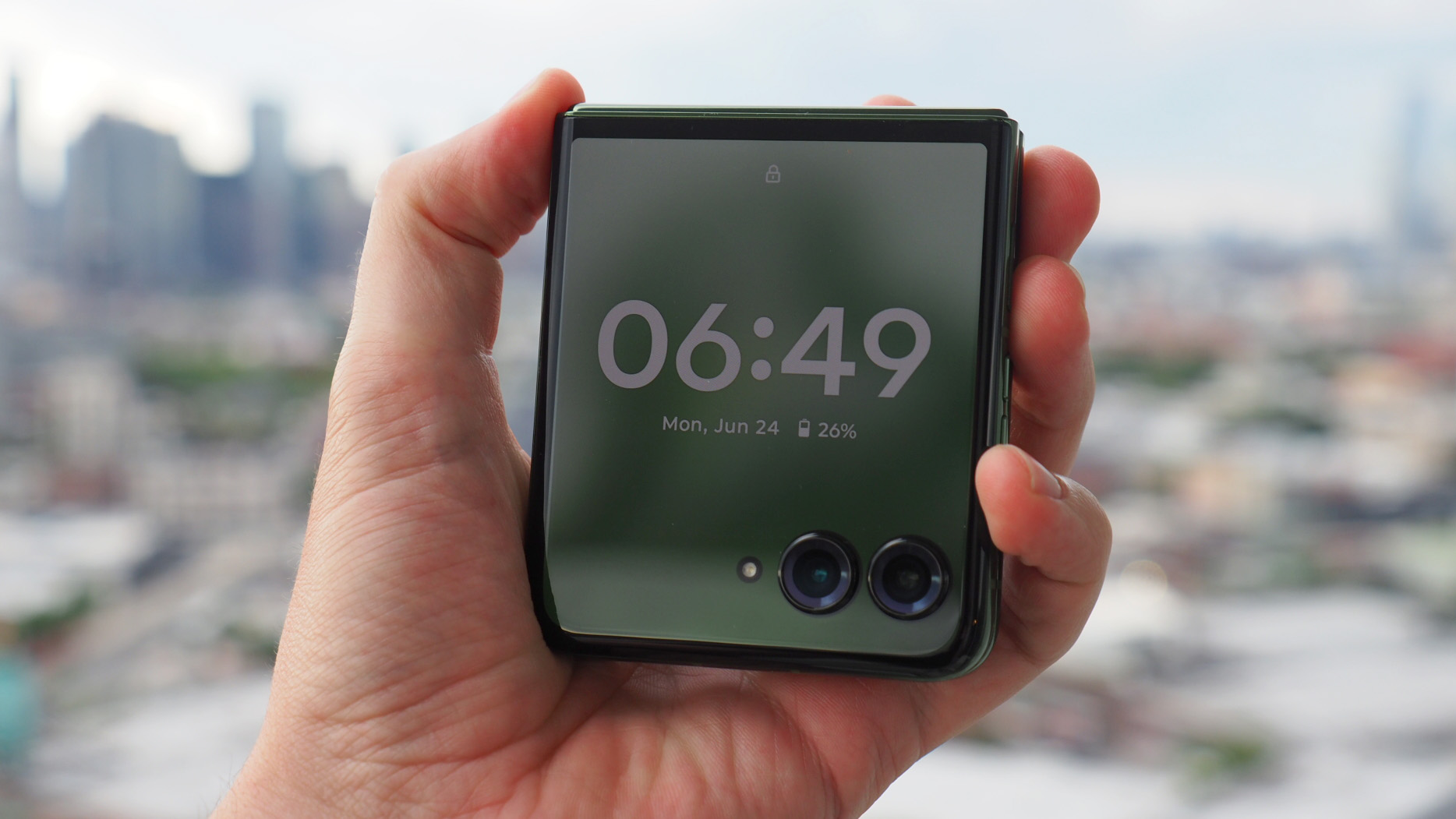
It's a really interesting time for flip phones: more makers are entering the market, which is hotting up the competition, and seeing brands pull out all the stops to improve and deliver the ultimate user experience. Motorola is no stranger, of course, with its original Razr phone now 20 years old and a rare icon in the game.
Since reviving the Razr in 2019, however, there have been progressive steps to improve the company's flip phone, cumulating in this: the Motorola Razr 50 Ultra (or 'Motorola Razr Plus (2024)' as it's known in the USA). It's the flip phone with the largest cover display and arguably the largest attitude thanks to its colourful fashion-forward design.
I've reviewed many of the best folding phones over the years, including the earlier Razr 40 Ultra, and there's no doubt that Motorola has elevated its latest Razr to new heights – stepping above and beyond Samsung's Galaxy Z Flip 5 in the process. That said, as with any flip phone, there are some compromises, so can Motorola negate those better than any rival?
Razr 50 Ultra: Price & Availability
There's no getting around the fact that folding phones are expensive: the 2019 Razr was $1499 at launch, which equates to around £1200 in today's money. The general price has been decreasing for flip phones since though: the previous Razr 40 Ultra was £1,049 at launch in the UK, while the Razr 50 Ultra goes one better, cutting that to £999.
I think it's psychologically crucial that the Razr 50 Ultra nets that sub-four-figure asking price. Not only does it place it in the ballpark of the best phones, or at an even lower price than many flagships, it's on par or better-priced than its nearest and best competition – Samsung being the most comparable.
Razr 50 Ultra: What's new?
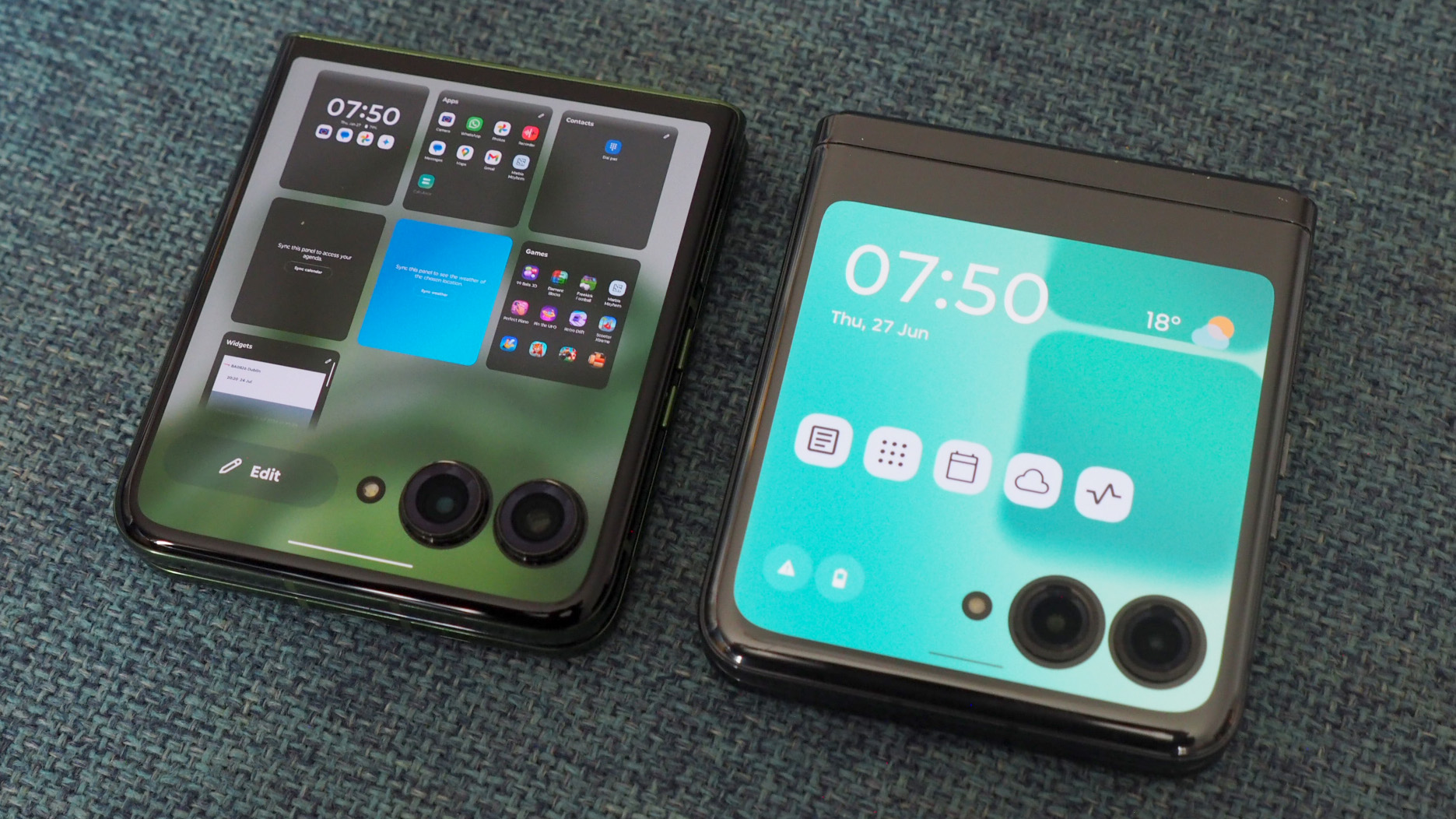
I spent a lot of time using both Motorola Razr 40 Ultra and 50 Ultra side by side just after the latter product was revealed, comparing the two and, perhaps predictably, noting that the newer device is better in almost every department – if you're okay with the absence of an ultra-wide camera anyway.
That's because the Razr 50 Ultra has upgraded its cameras, upping the resolution (from 12-megapixel to 50MP) and introducing a 2x optical zoom in place of the ultra-wide of its predecessor. It's because Razr users are more likely to snap portraits, Motorola's data says, and a 2x zoom lens is better for that. The lenses protrude slightly more from the body, too.
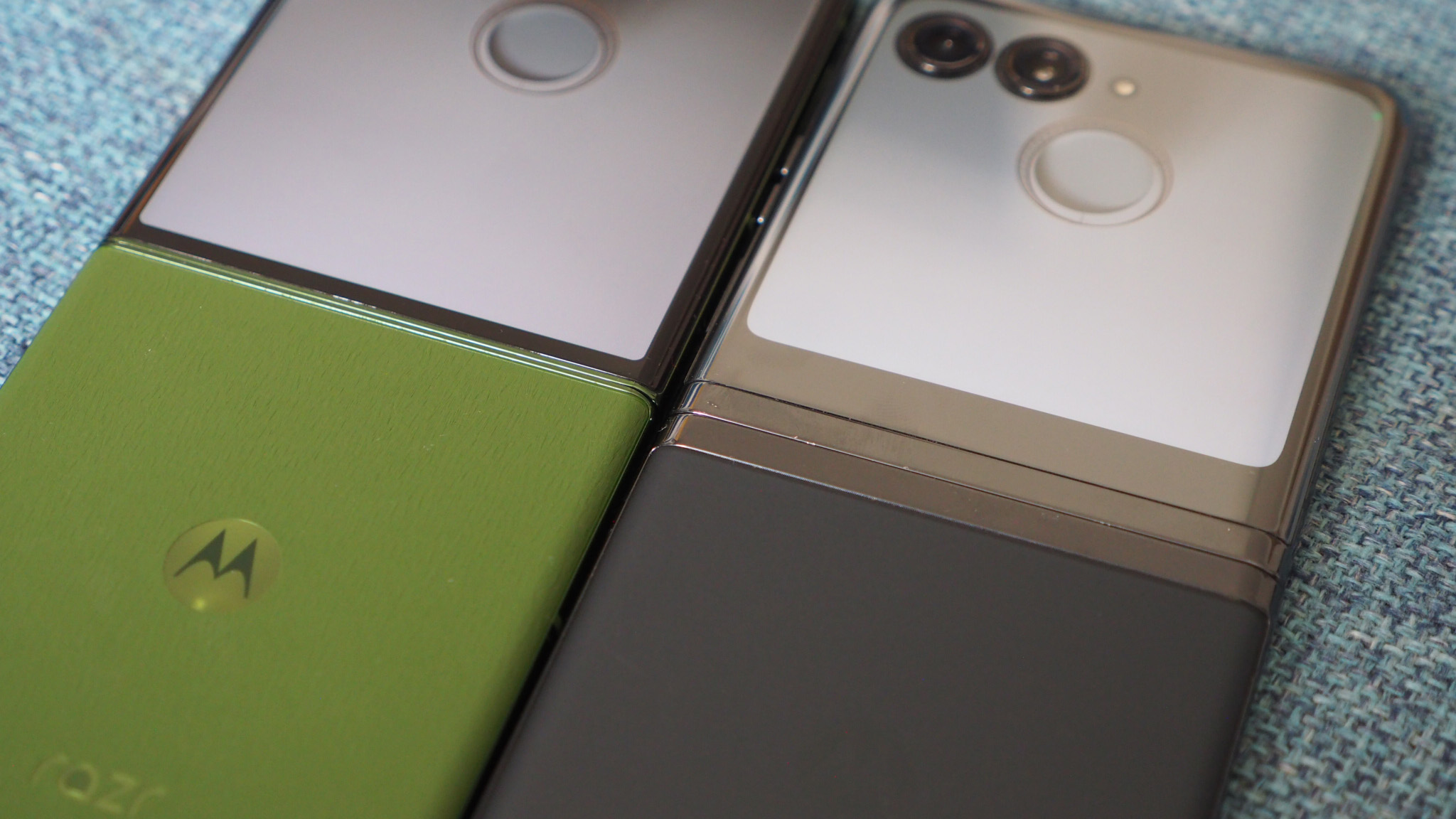
The cameras aren't the biggest change though: the Razr 50 Ultra ups the cover display's size to 4.0-inches (from the 3.6-inch one of the 40 Ultra), giving this flip phone the largest one on the market. That's been made possible thanks to a hinge re-design, the reduction of which has allowed for more screen-eligible space on the front.
As you can see from the quick-glance table I've posted above, the changes don't end there: the Razr 50 Ultra increases the battery capacity and charging speed, ups the main screen's peak brightness potential, and swaps for a newer (but altogether similar) Qualcomm processor. That's a lot of differences that add up to a substantial change overall.
Razr 50 Ultra review: Design
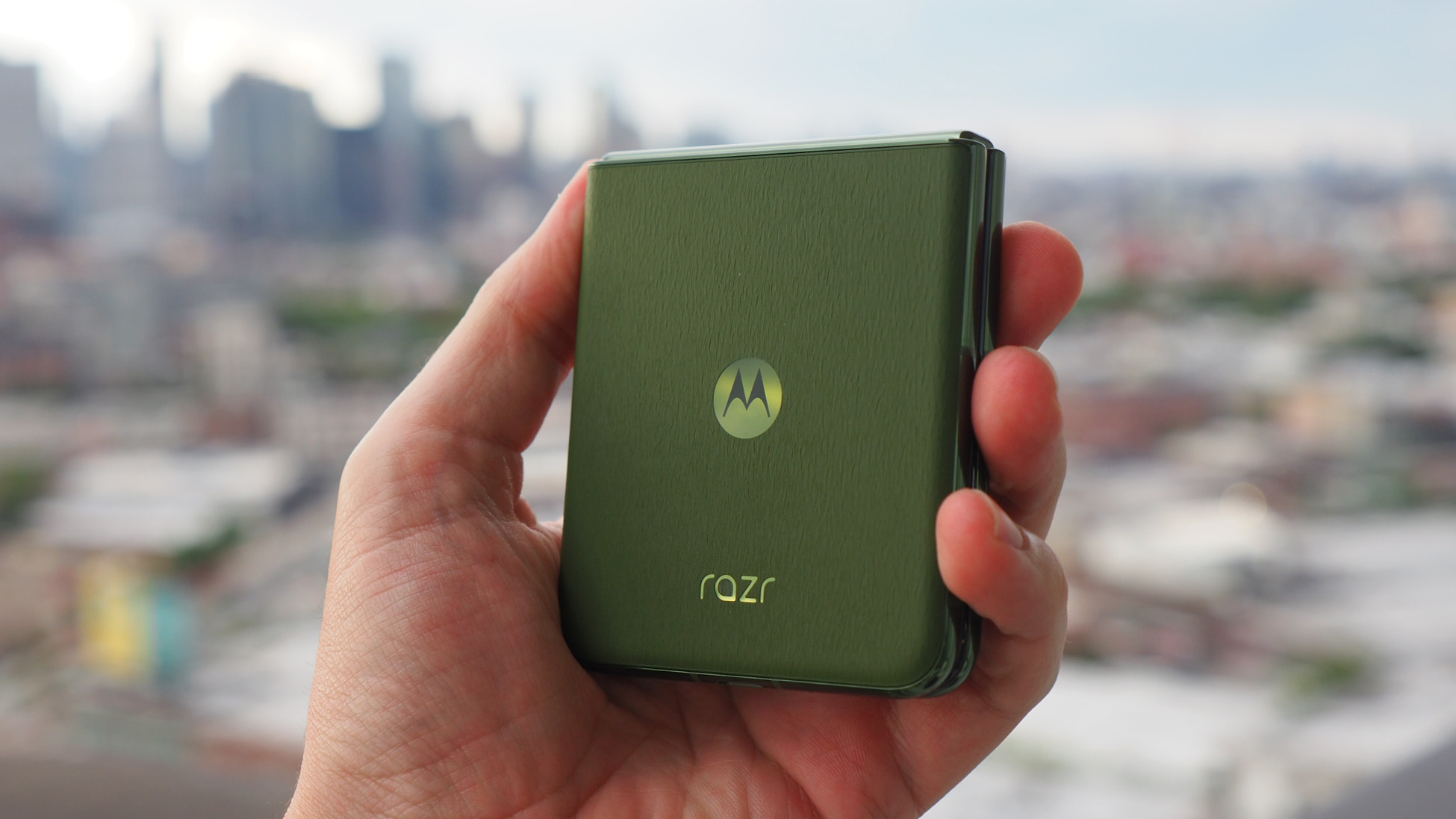
Design is one key area where Motorola is looking to stand out from the crowd. There's even an exclusive Pantone partnership to deliver finger-on-the-pulse on-trend colours – there's Color of the Year each year, if you didn't know – which is an immediate area where this handset jumps out.
On review I've got the newest Spring Green finish, which might not be my first pick – Peach Fuzz is Pantone Color of the Year 2024, after all – and joins Hot Pink and Midnight Blue as the four available options. Each has a slightly different tactility, too, with various soft-touch finishes to the vegan leather creating a much nicer feel in the hand.
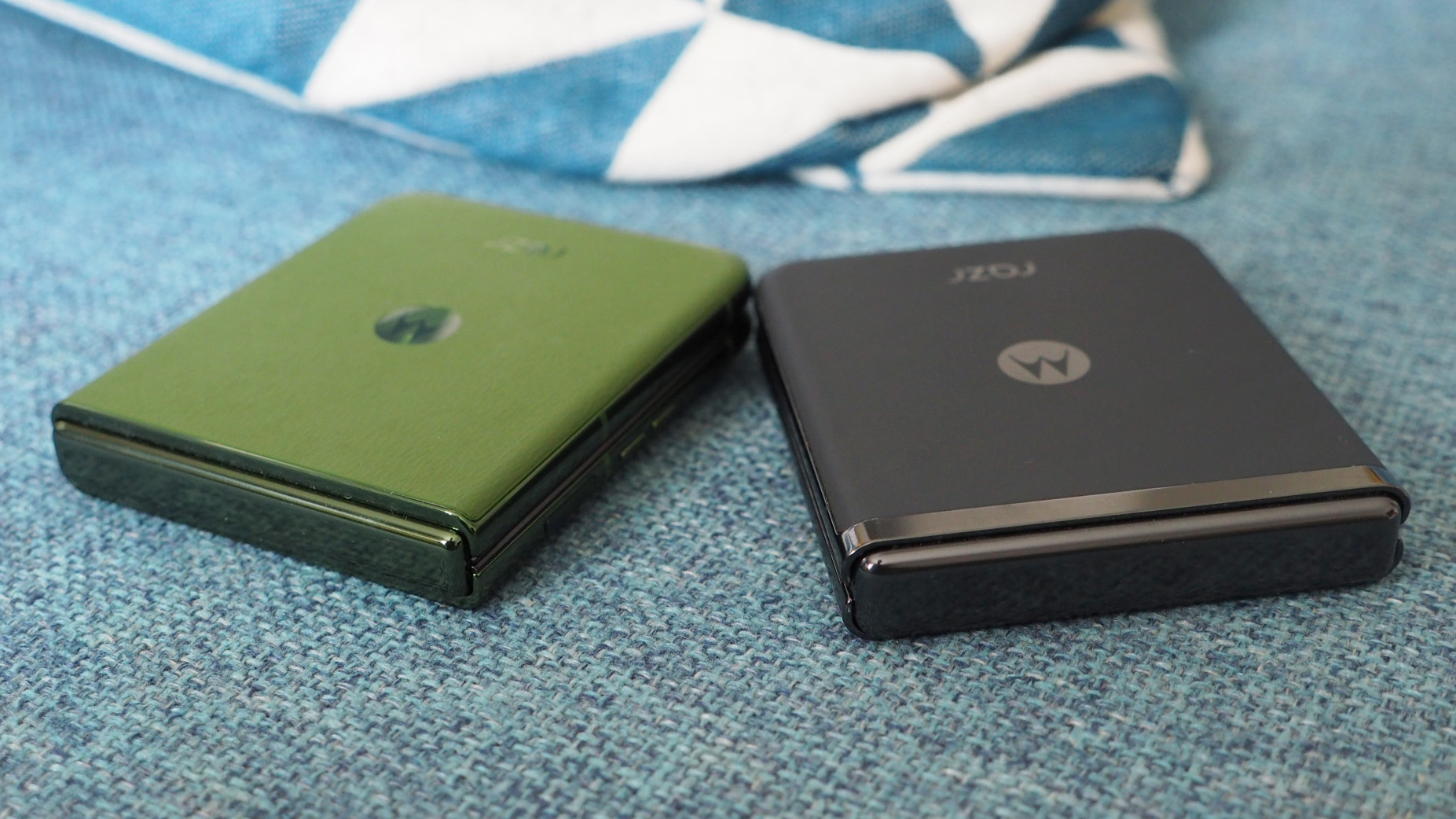
The overall visual of the Razr 50 Ultra looks much like its predecessor, which is no bad thing. Just as I said of that phone: clamshell folding phone designs are 'a distinctive proposition' – because when folded up it's like a little box rather than a classic phone. The two camera lenses cutting through that cover display can also limit the functionality, but there are times when Motorola references them playfully – such as with an old-school tape deck visual using one as if it's a reel.
That said, with a cover display this large, I've often found myself using the Razr 50 Ultra in its closed position. As Motorola has the best software implementation of any foldable, it's possible to run any Android app you wish on the cover display. There's an always-on display option this time too, giving the folded position even greater usability – so when it comes to notifications, SMS, Gmail and similar it's really easy to use.
Razr 50 Ultra review: Displays & Software
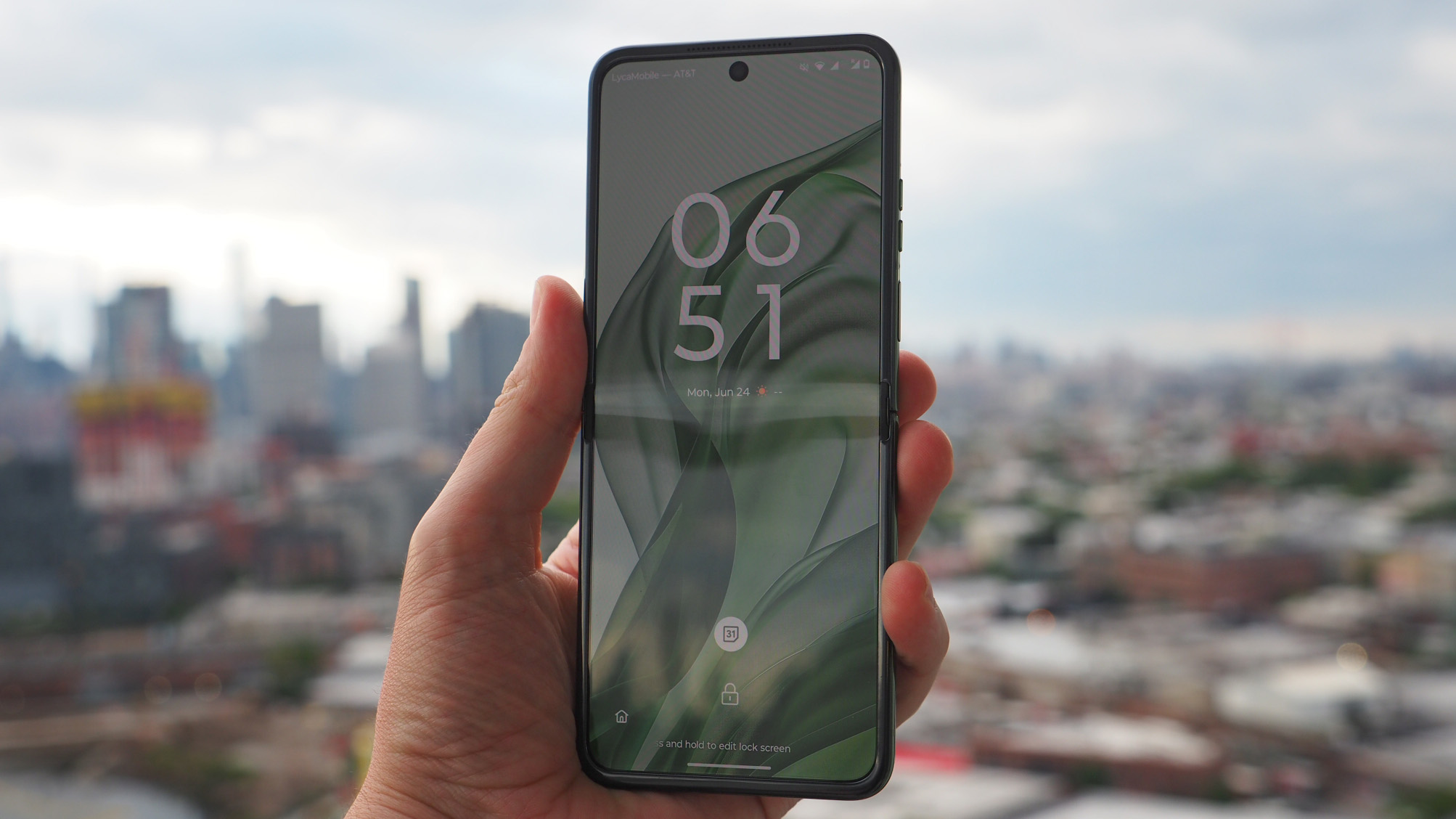
While I prefer Motorola's take in permitting any app to appear on the cover display – irrelevant as to whether usable or not; in full-screen setting the cameras can cover integral controls in some apps, for example – it's the widgets that I've found particularly handy for quick-glancing. I've learnt to use the phone as a best of both worlds, from both of its displays.
When you do flip the Razr 50 Ultra open, however, the 6.9-inch display within is way brighter than its predecessor. That's a massive upgrade for this generation – in particular because pOLED (that being plastic-coated OLED, essential in a folding design) is innately reflective, so in outdoor conditions you'll want that added brightness to cut through. When I was testing the handset in sunny Brooklyn, NY, it was super-bright and a great test to prove its worth.
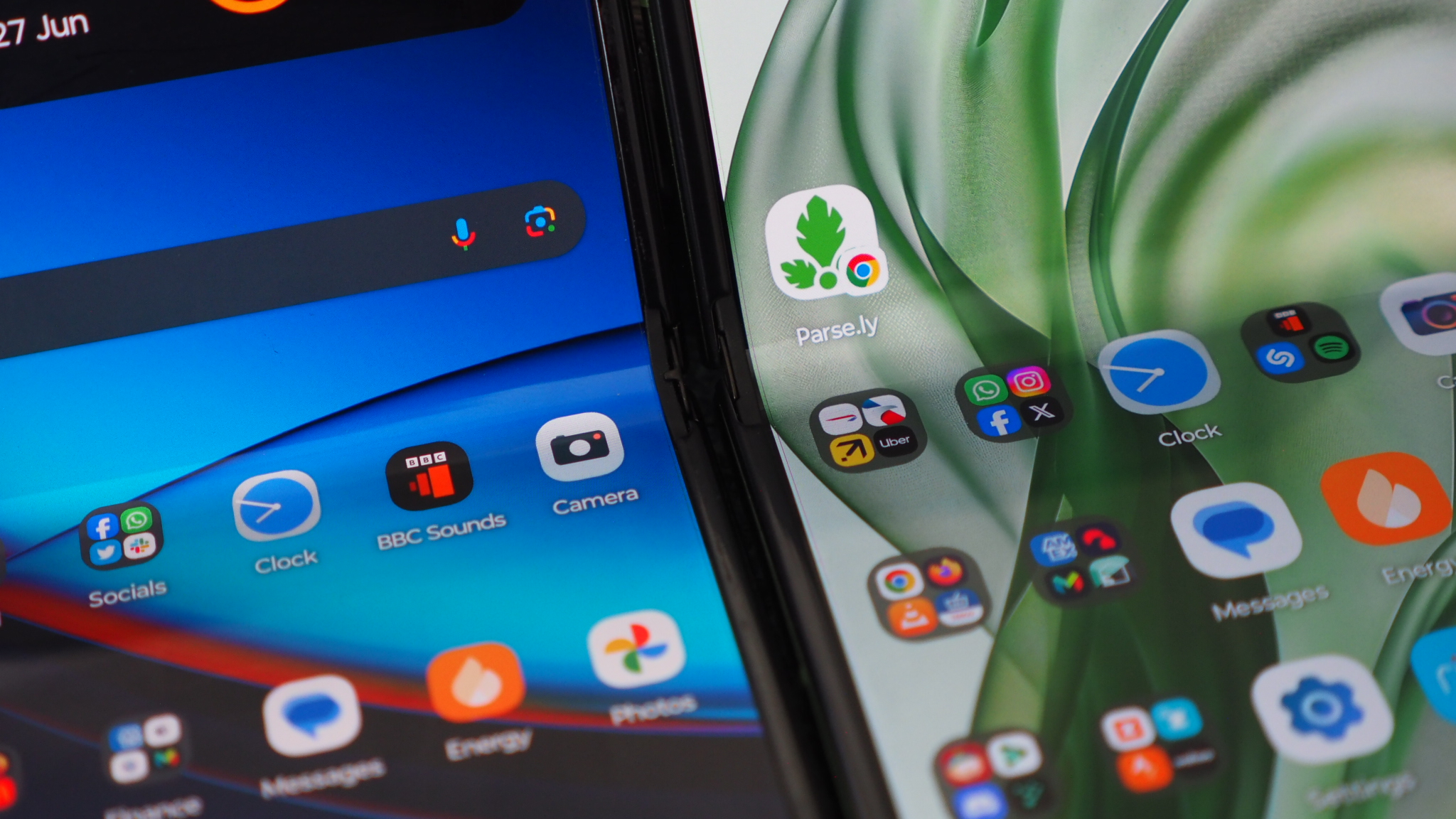
That said, Motorola still hasn't fully negated the typical issues you'll find in any foldable. Namely, two issues: the unavoidable crease, where the panel folds across its centre; and the fingerprint magnetism of pOLED's covering and how that can create additional reflective bothers. The added brightness is a step forward, for sure, but no foldable is perfect in this regard.
But back to the Razr 50 Ultra being in its closed position: the software has been massively upgraded in visual terms, presenting much neater-looking 'Panels' on the cover display. You can add additional Panels, too, although these can only be added or removed from a pre-selected list – so it's not like reams of app pages – but still looks very neat. Re-ordering them so your, say, Calendar or Spotify or Google News are fewer left/right swipes away might be preferable.
Razr 50 Ultra review: Performance & Battery
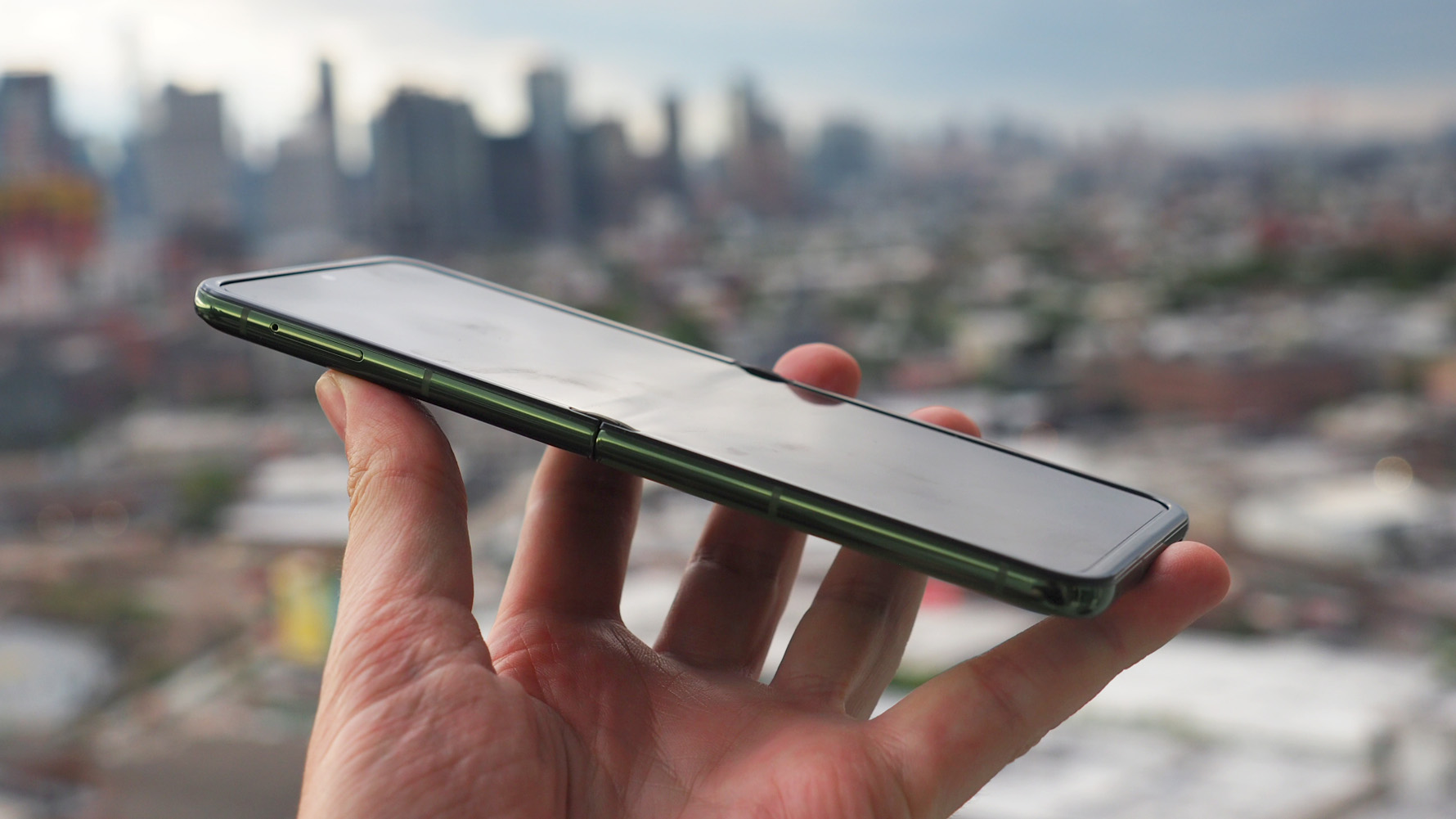
Tucked inside the Razr 50 Ultra is the most up-to-date Qualcomm processor (at the time of writing): the Snapdragon 8s Gen 3. Yes, that all-important 's' features in the name, which oddly means it's, er, slightly less capable than the very top-tier 8 Gen 3. Not by much, though, and I think the reason for this chip's existence is to enable brands to hit target price points.
Nonetheless, the performance is typically top-tier, as you'd assume, with some minor caveats. Almost any phone will need to throttle and limit in order to maintain temperature and as no flip phone has cooling chamber technology as yet, after extended sessions in more intense apps or games you may see a frame-rate drop, for example. That's one of those flip phone compromises that's largely unavoidable, as I mentioned up top.
When I reviewed the Razr 50 Ultra's predecessor I noted that it got hot under use – something that's vastly improved for the newer model in my opinion. That's great to see, as makes for more comfortable use overall, and ought to help out the battery life too. Although, as I've found, the battery – despite its capacity increase – still isn't best matched for power users.
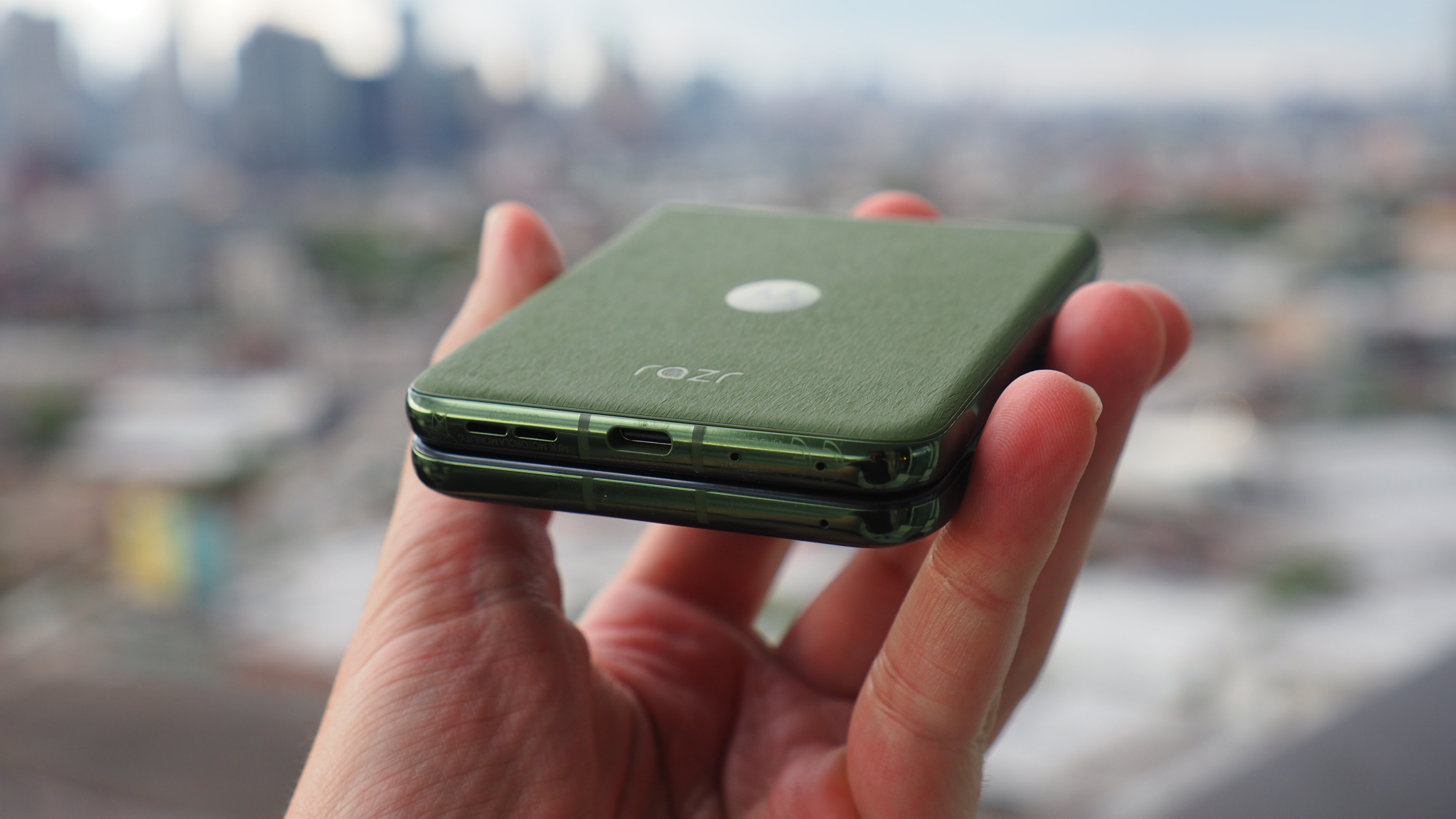
It's a great achievement to squeeze a 4000mAh cell into a device this small, even if it's only around a 5% increase over the previous model. It's necessary to help handle the increased pixel count of the cover display and, of course, the higher brightness of the folding display. But does it equate to more significant usage time per charge? Not really – although it'll entirely depend on the apps you're using.
I've been using the Razr 50 Ultra as my own device for over a week for this review, so it's settled into a rhythm, and with my use I tend to get from 6am to 6pm with circa 30% battery remaining. That'll get me to a 10pm bedtime but not much more. It's workable, but if you're hammering gaming apps then you'll want to top-up in the day – fortunately the 45W wired charging is a solid 50% quicker than the last-generation device for relatively speedy refills.
Razr 50 Ultra review: Cameras
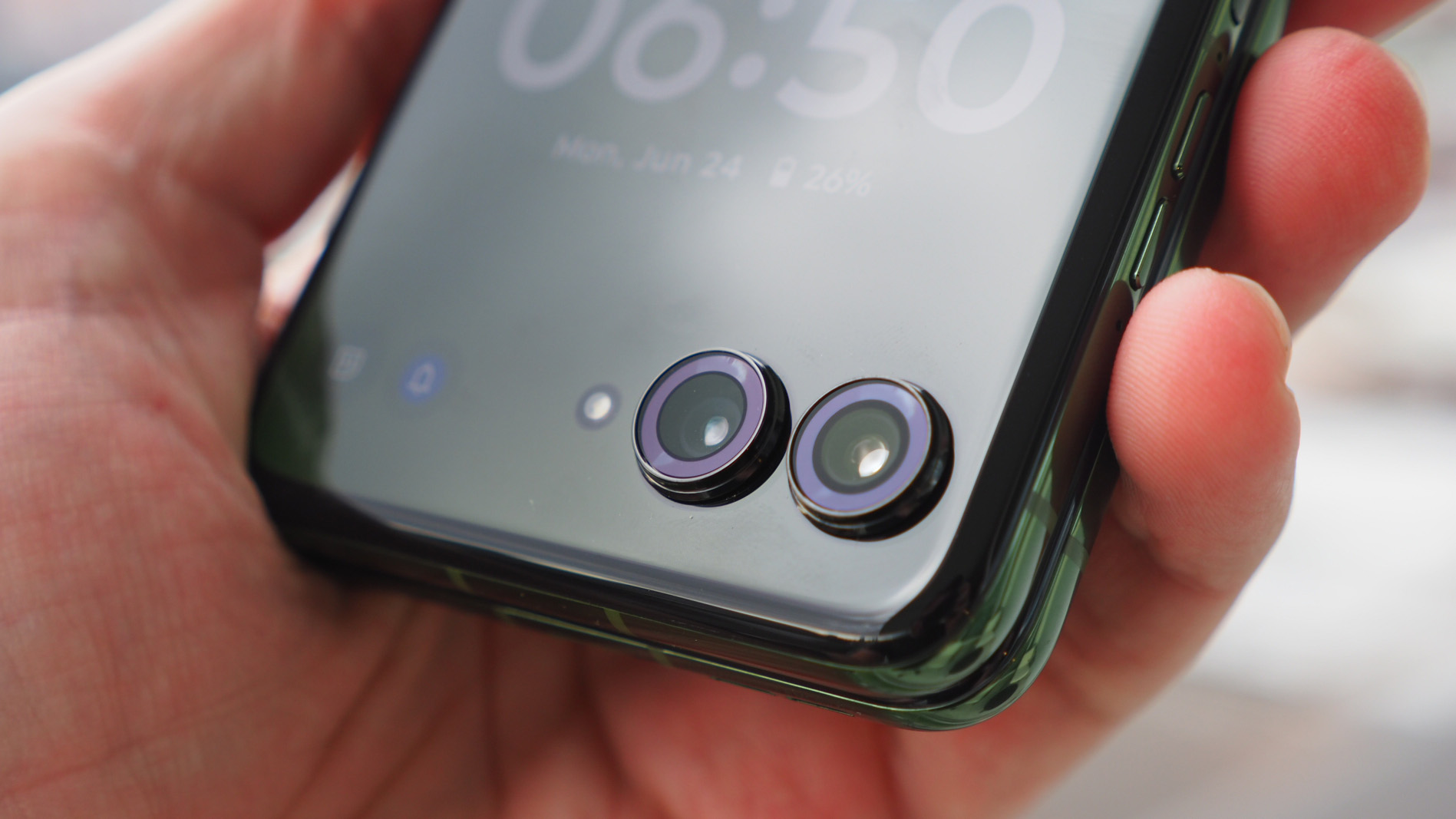
Flip phones haven't traditionally been at the forefront of camera tech. That's no major surprise given the limited space that manufacturers have to play with. So it's great to see that Motorola has ramped up the cameras presence in the Razr 50 Ultra compared to its predecessor.
Key to its arrangement – which continues as a dual protrusion from the front cover display – is a 2x optical zoom to complement the main camera, both of which are 50-megapixels in resolution apiece. That means the zoom doesn't compromise in terms of pixel count, unlike many competitors.
As I've said, however, that addition of that zoom lens has meant the removal of any ultra-wide lens. I've found this an occasional loss when I can step back any further to fit a full scene in, but can understand the logic – there's not realistically room for three lenses here. The only workaround I can think of would be Motorola opting for an extra-high-quality ultra-wide that would crop into the frame to act as the standard main – but that's not the case here.
So what of the picture quality? It's a decent showing, arguably with processing oversharpening a touch too much, but with on-board auto-HDR (high dynamic range) the exposure balance is decent and colours nicely balanced. Daylight is the camera's friend, which is where shots will pop the most.
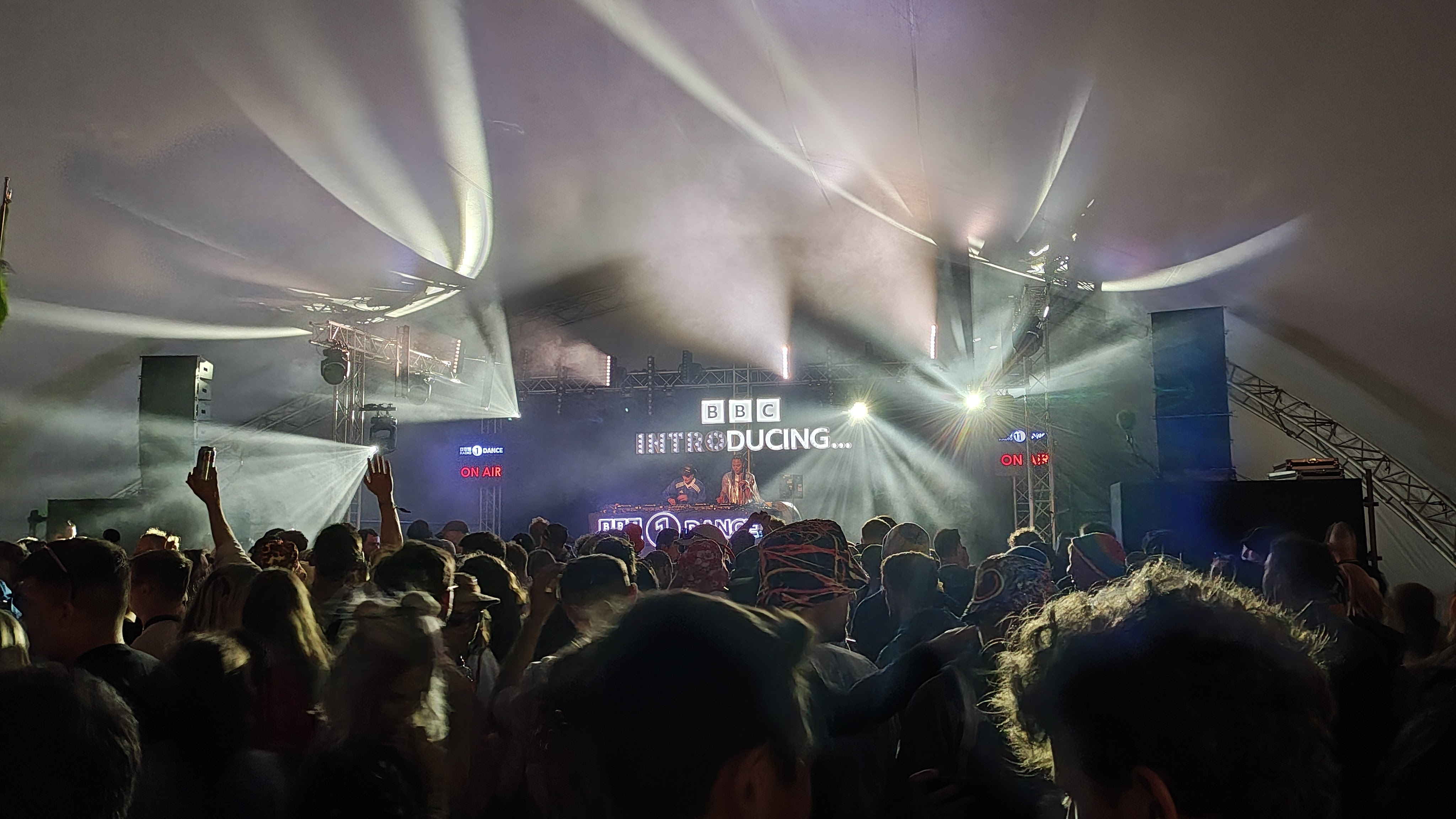


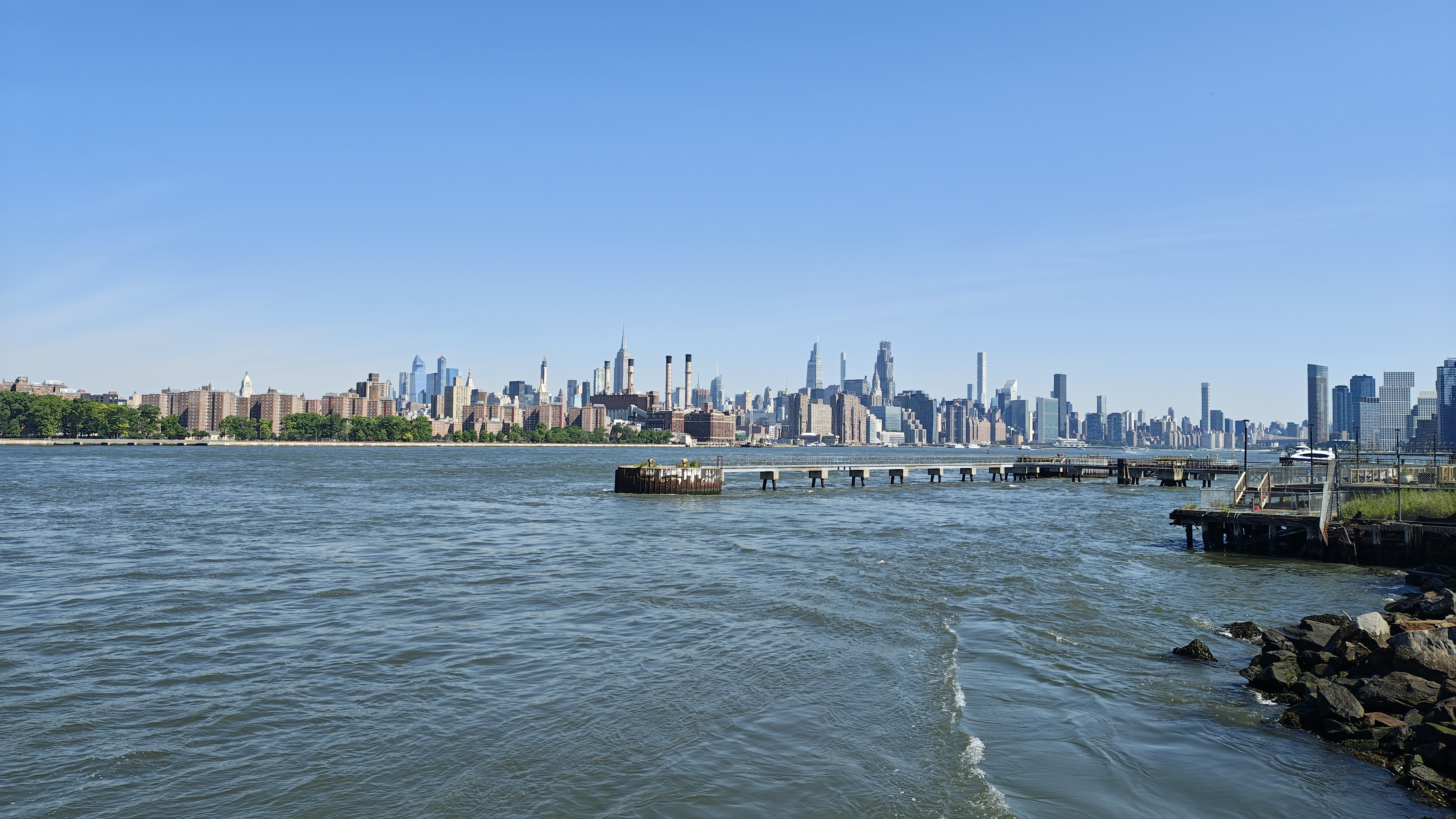

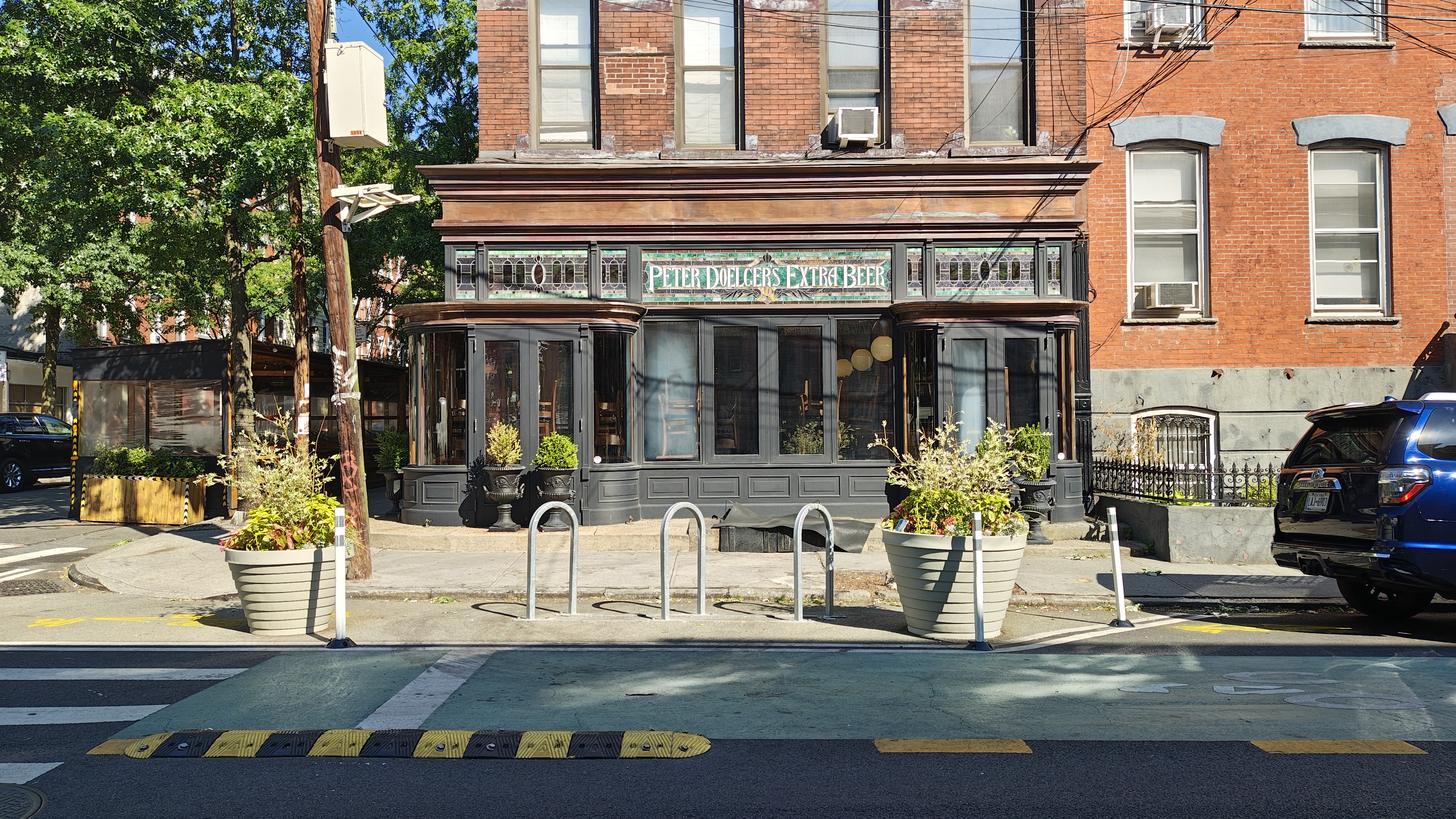
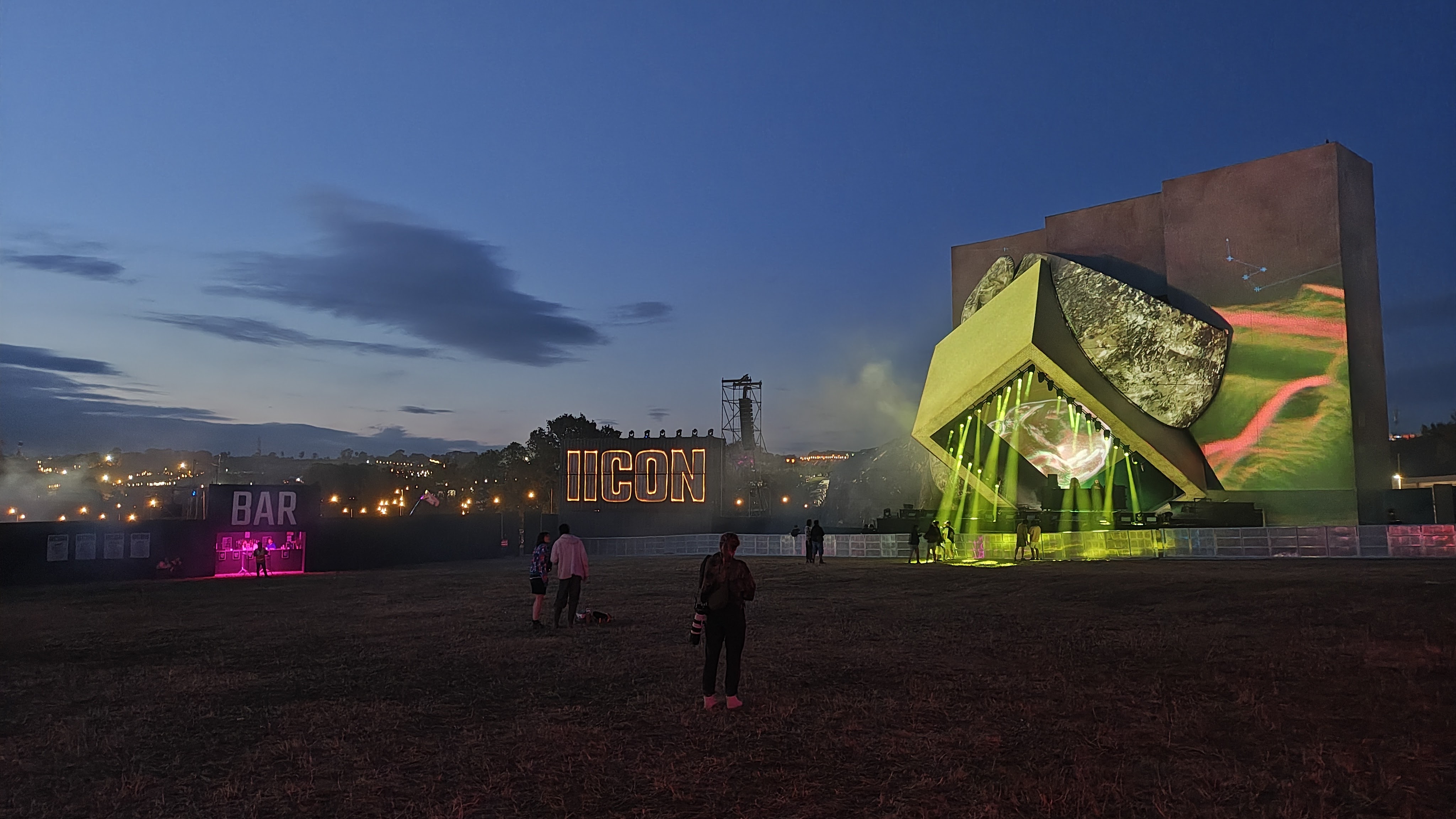
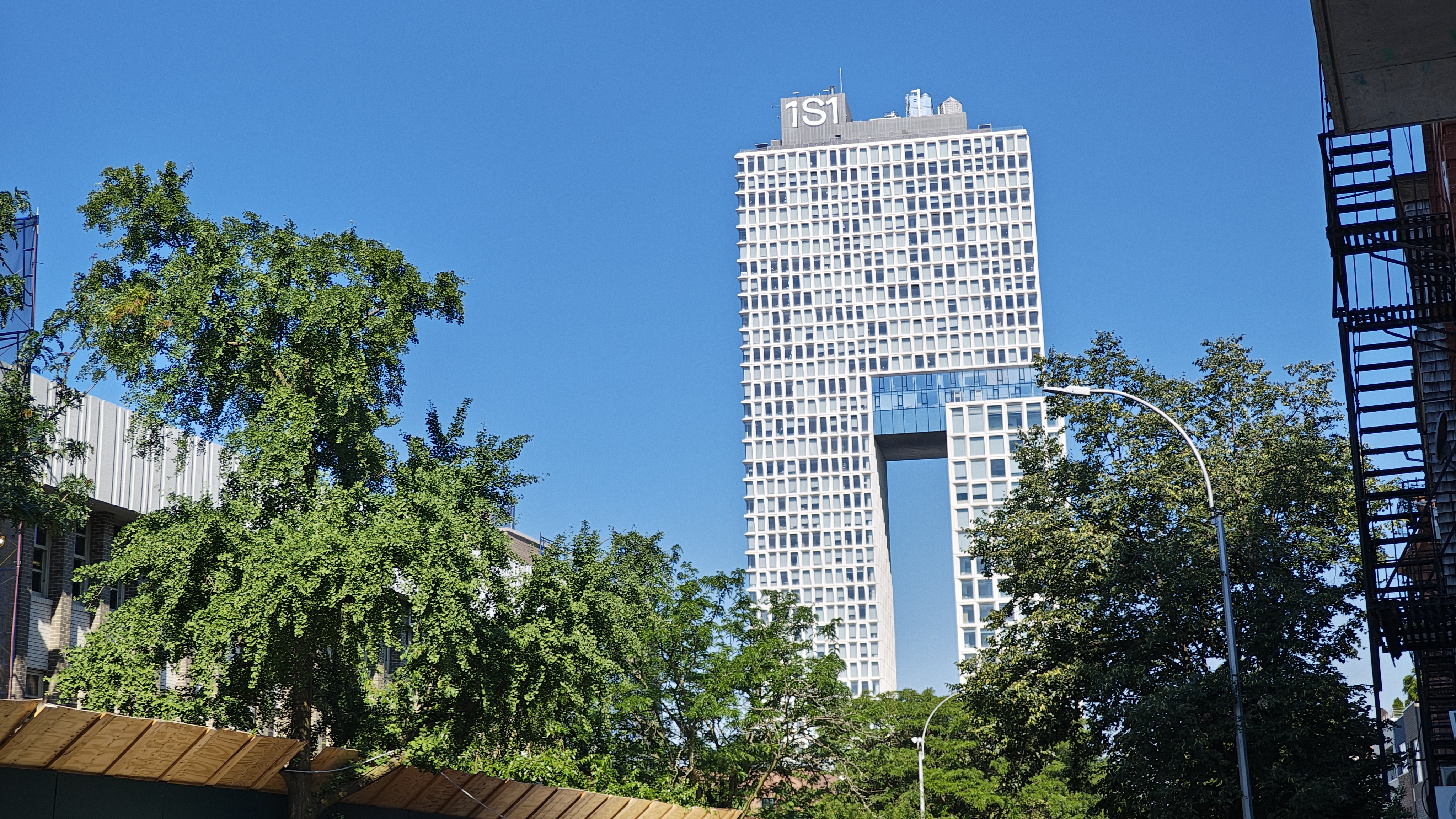

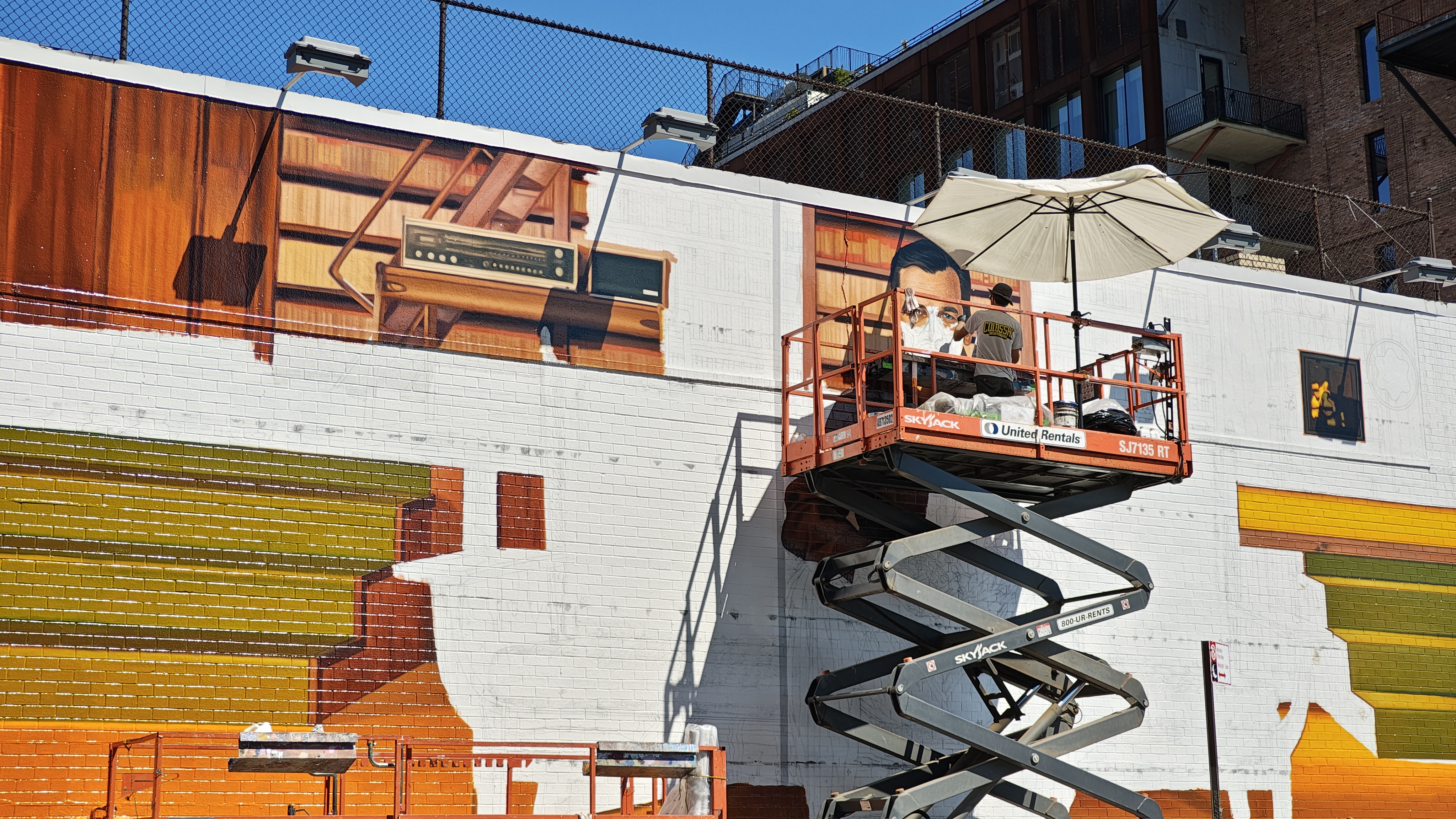

But that's not to say shooting at night is an issue: I've been capturing plenty of scenes from dimly lit scenarios while at Glastonbury Festival 2024, and while the grain and sharpening is even more visible, viewing at full-size ratio the results are still decent. A Night Mode is handy, too, for longer handheld exposures – but it's rather hidden away in the 'More' section of the Camera app.
There are other settings and automations too: a quick-activated Action Shot will be ready and waiting for faster-moving subjects, while Auto Focus Tracking means you can tap on a person (or dog or cat, specifically) to lock the focus. There's also Shot Optimization which uses artificial intelligence (AI) for scene recognition and processing.
The addition of the 2x lens is useful, but digitally zoom beyond this and things quickly begin to dwindle. A flip phone isn't going to easily accommodate a 3x or greater zoom, mind, so I'm just happy that a more portrait-focused lens is available here – although the Portrait Mode (with its software-based background blur effect) is a little overzealous in its want to blur too much.
Motorola Razr 50 Ultra review: Verdict
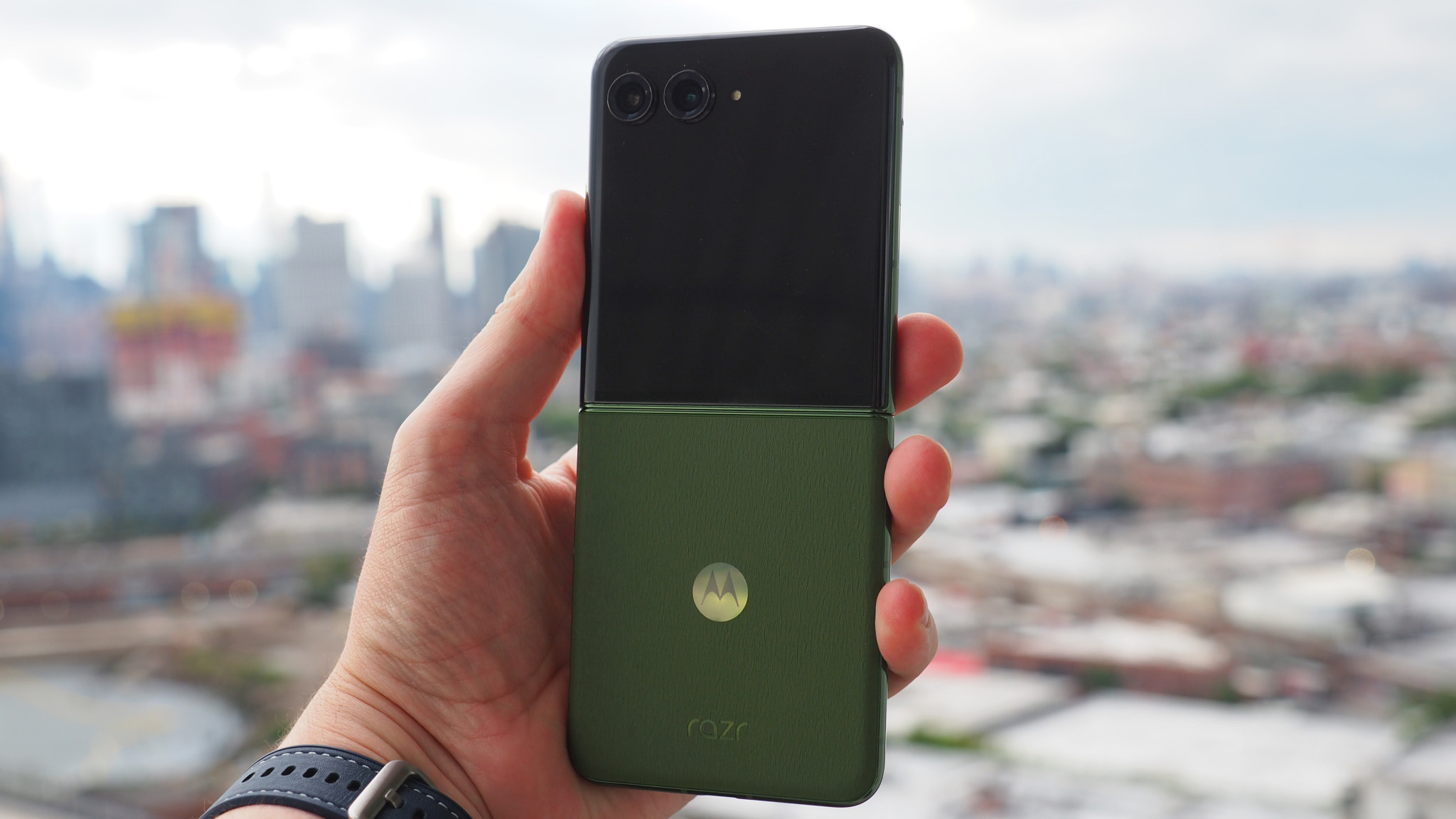
I'll say this without qualm: the Motorola Razr 50 Ultra is easily the best flip phone you can buy in 2024, without exception. It's nicely upgraded compared to its predecessor and has the biggest and most usable cover display too.
So why not a full-marks score? Ultimately the compromises of any flip phone don't quite outweigh the benefit of a flagship for me. Until some major breakthrough is made to negate folding displays' crease visibility, and coatings created to completely reject fingerprint smears, there are always going to be minor niggles.
In context of the market, however, the Razr 50 Ultra is a compact and great-looking fashionista flip phone. It's elevated the category to new heights and, if you're specifically looking for a phone of this type, then it's untouchable right now – outsmarting even Samsung's best efforts.
Also consider
So there's no better flip phone than the Motorola right now, but the Samsung Galaxy Z Flip 5 offers a decent alternative – and it costs much, much less at the time of writing. You'll get a smaller cover display as a result, of course, and the software isn't as open as Motorola's, but with a good hinge mechanism and decent battery life all considered, it's the next best option if budget is a big concern.







